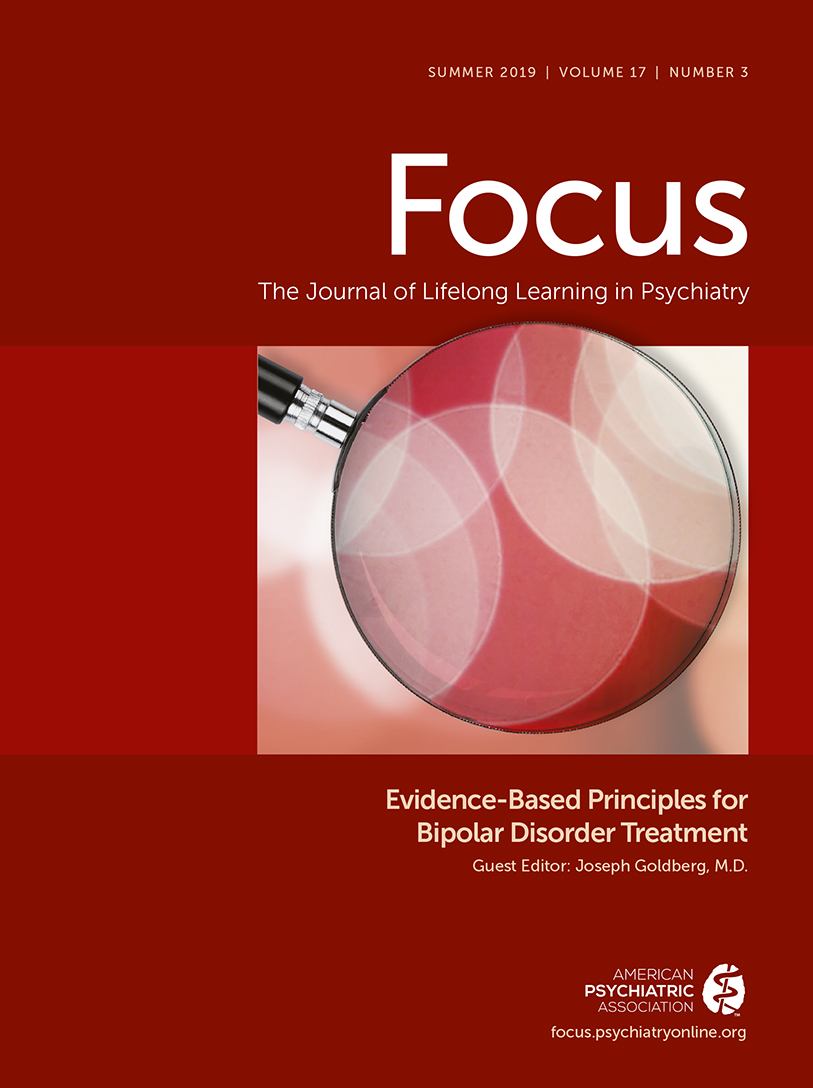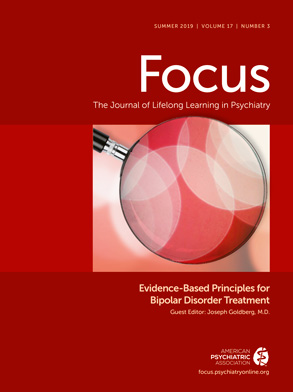Antidepressants in Bipolar Depression: An Enduring Controversy
Abstract
Background
Bipolar Depression
First Line/Classic Treatments for Acute Bipolar Depression
Antidepressants in Bipolar Depression: Conceptual Concerns
Antidepressants for Acute Bipolar Depression: A Summary of the Efficacy Data and Meta-Analyses
Antidepressants for Acute Bipolar Depression: A Summary of the Switch Data and Meta-Analyses
Cycle Acceleration from Antidepressants
Treating Bipolar II Depression with Antidepressants
Long Term Treatment with Antidepressants in Bipolar Disorder
Antidepressants in bipolar disorder: a clinical perspective
| Bipolar I vs. bipolar II |
| Mixed depressive features |
|---|
| Rapid cycling |
| Antidepressant subtype-TCAs > venlafaxine (?other SNRIs) > SSRIs or bupropion |
| Substance abuse history, especially stimulants |
Conclusion
References
Information & Authors
Information
Published In
History
Authors
Metrics & Citations
Metrics
Citations
Export Citations
If you have the appropriate software installed, you can download article citation data to the citation manager of your choice. Simply select your manager software from the list below and click Download.
For more information or tips please see 'Downloading to a citation manager' in the Help menu.
View Options
View options
PDF/EPUB
View PDF/EPUBLogin options
Already a subscriber? Access your subscription through your login credentials or your institution for full access to this article.
Personal login Institutional Login Open Athens loginNot a subscriber?
PsychiatryOnline subscription options offer access to the DSM-5-TR® library, books, journals, CME, and patient resources. This all-in-one virtual library provides psychiatrists and mental health professionals with key resources for diagnosis, treatment, research, and professional development.
Need more help? PsychiatryOnline Customer Service may be reached by emailing [email protected] or by calling 800-368-5777 (in the U.S.) or 703-907-7322 (outside the U.S.).

